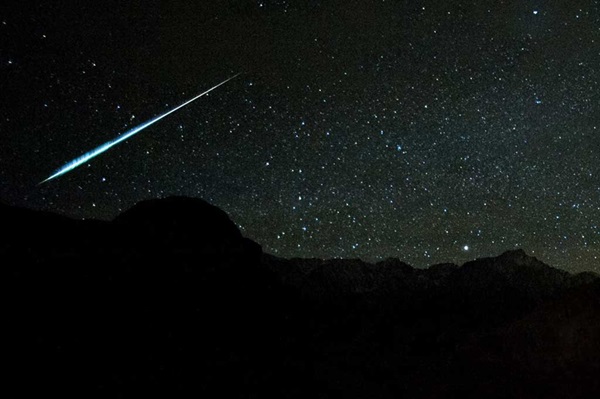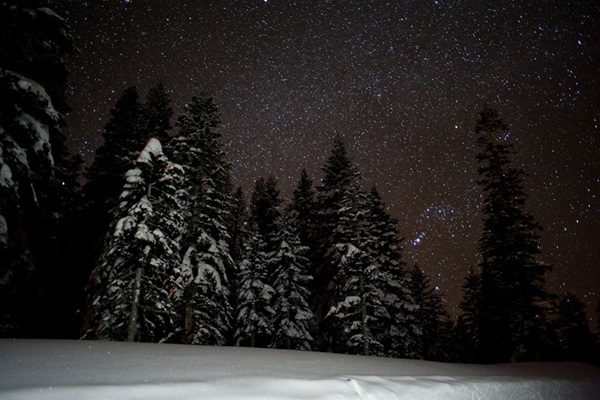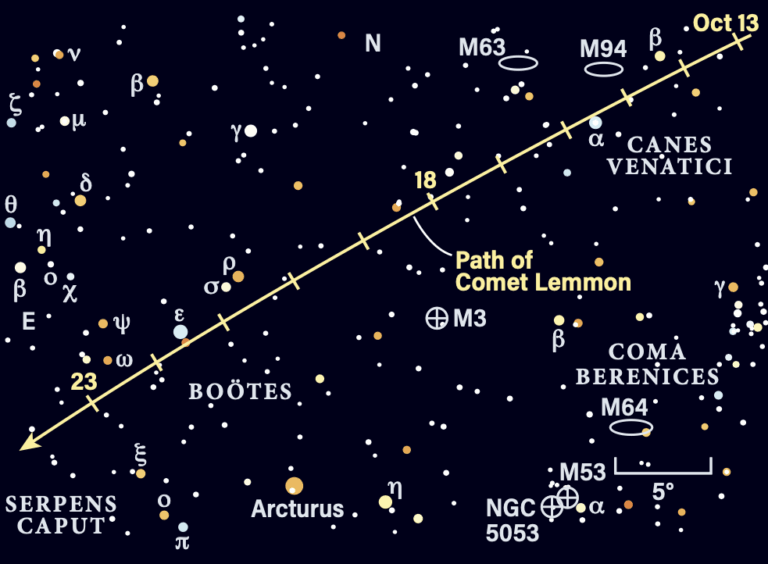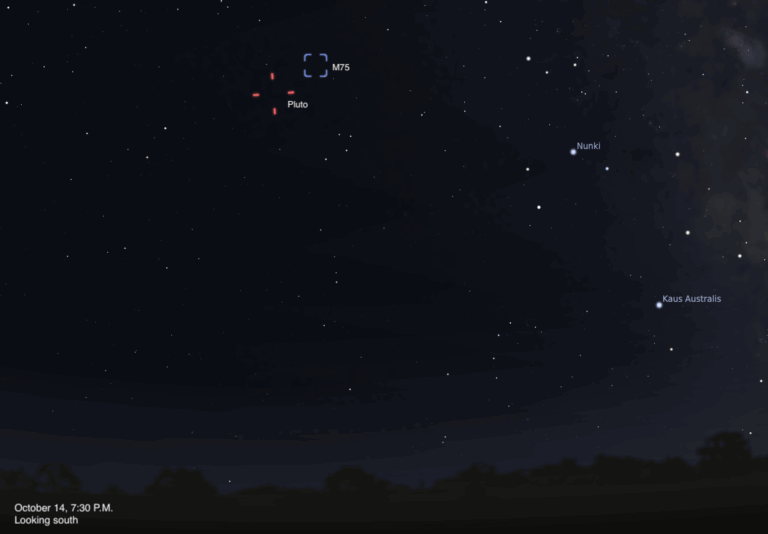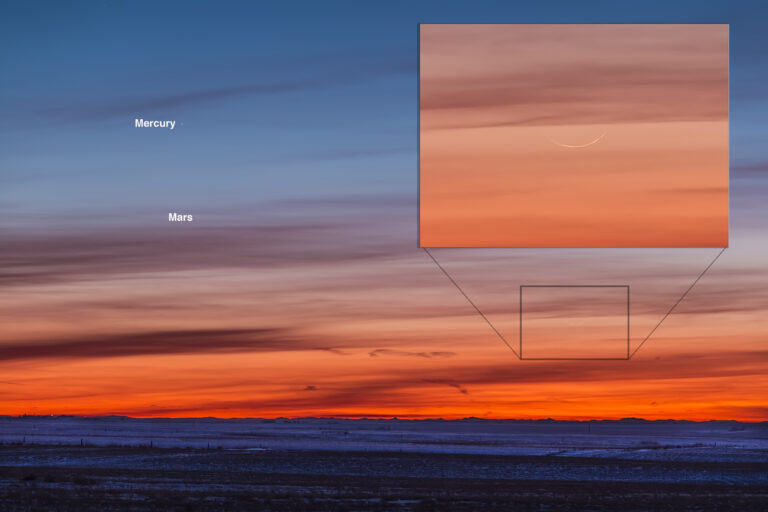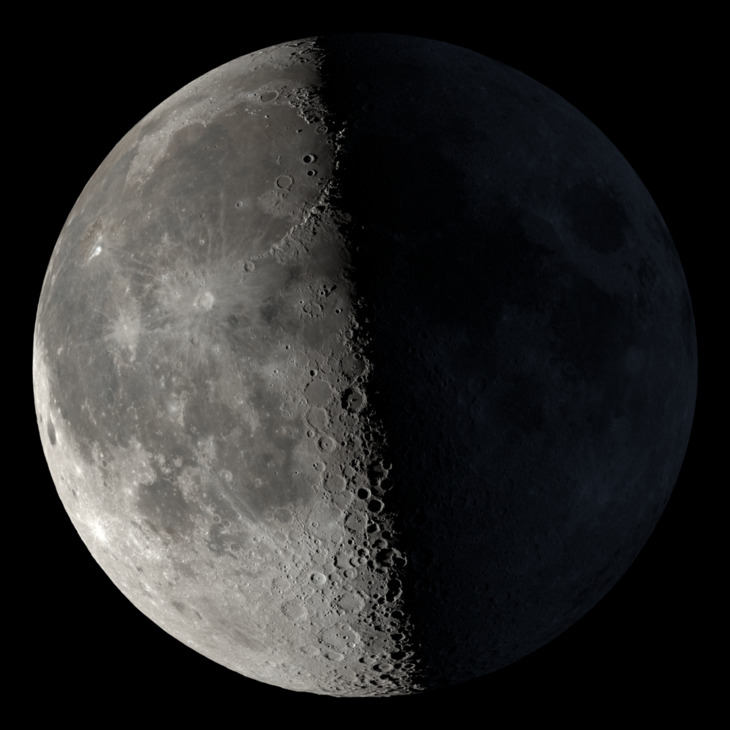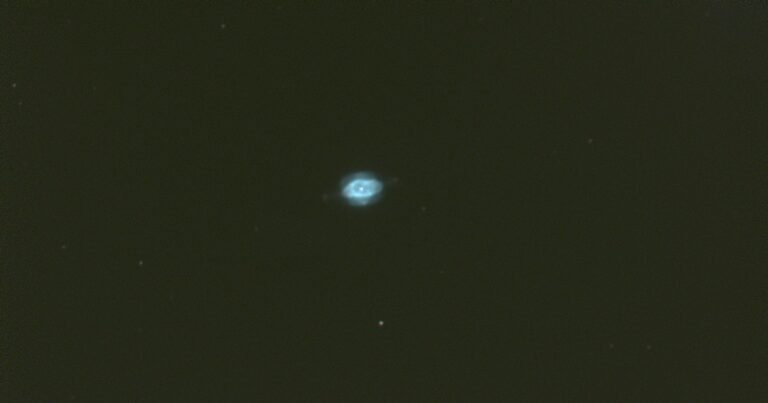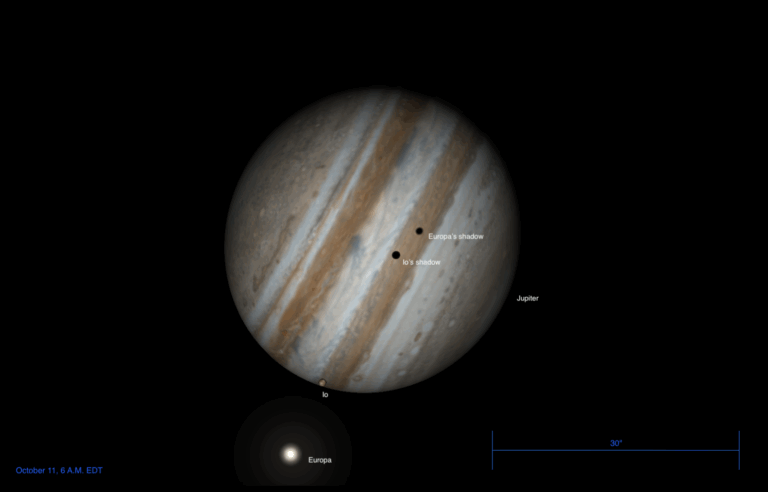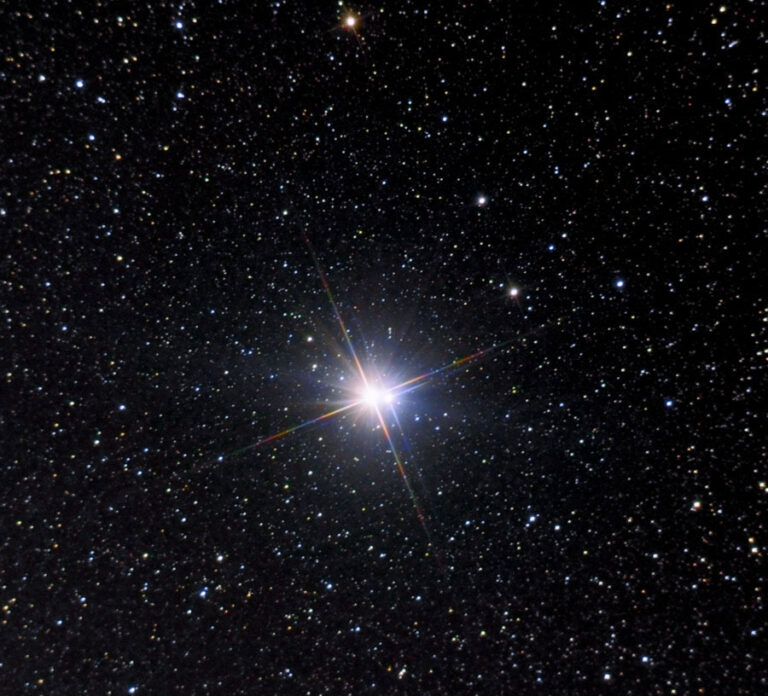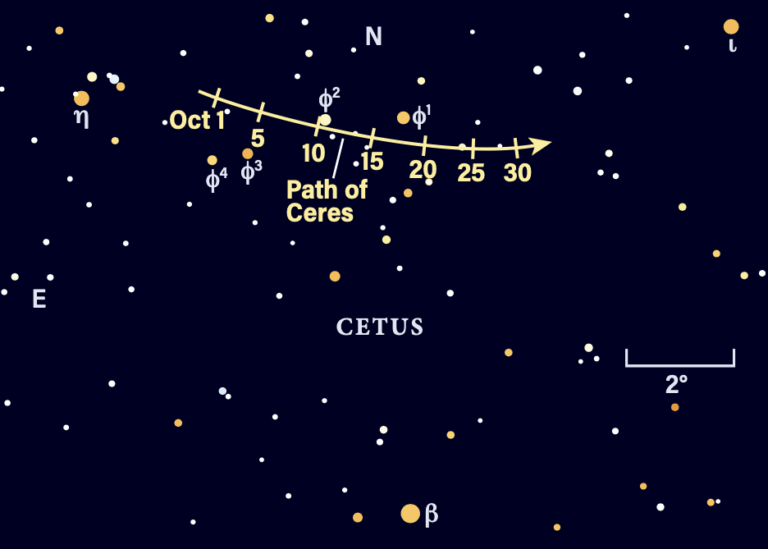Key Takeaways:
The 2012 Geminid meteor shower was a great one, with a high hourly rate even before the night of peak activity. This particular meteor appears to have been a fireball — a meteor as bright as Venus and one brilliant enough to cast a shadow from under a dark sky. With the Moon out of the sky in 2018, this year’s shower should be equally good.
Mars continues to put on a nice show these December evenings. The Red Planet appears nearly halfway to the zenith in the southern sky as twilight fades to darkness. The ruddy world shines at magnitude 0.1, as bright as any other early evening object, against the faint backdrop of Aquarius the Water-bearer. As you gaze at Mars with your naked eye, you might assume it’s the only object of interest in the area. But target the planet through binoculars or a telescope and you’ll also see the much fainter glow of Neptune. The magnitude 7.9 ice giant lies 16′ southwest of Mars this evening. (The magnitude 6.1 star 81 Aquarii stands 12′ north of Mars.) The actual conjunction between the two planets occurred at 9:08 a.m. EST this morning, when Mars passed 2.2′ north of Neptune, but both objects were then below the horizon from North America. When viewed through a telescope, Mars appears 9″ across while Neptune spans 2.3″. The two planets won’t pass closer to each other under a dark sky until October 19, 2210.
Although people in the Northern Hemisphere won’t experience the shortest day of the year for another two weeks (at the winter solstice December 21), those at 40° north latitude will see the Sun set earlier today than at any other time this year. Tomorrow’s sunset will arrive about one second later than today’s. The date of earliest sunset depends on latitude — the farther north you live, the closer it occurs to the solstice.
New Moon occurs at 2:20 a.m. EST. At its New phase, the Moon crosses the sky with the Sun and so remains hidden in our star’s glare.
Saturday, December 8
The days of viewing Saturn in the evening sky are just about over. In fact, tonight might be your last, best chance to see it this year. Although the magnitude 0.5 ringed world stands only 7° high in the southwest 45 minutes after sunset, a slender, two-day-old Moon serves as a guide. The two objects lie 3° apart and look beautiful through binoculars.
Sunday, December 9
Uranus reached opposition and peak visibility in October, but it remains a tempting target in December. The outer planet appears in the southeastern sky after darkness falls and climbs highest in the south around 8:30 p.m. local time. The magnitude 5.7 world lies in eastern Pisces, some 1.4° east-northeast of 4th-magnitude Omicron (o) Piscium. Although Uranus shines brightly enough to glimpse with the naked eye under a dark sky, use binoculars to locate it initially. A telescope reveals Uranus’ disk, which spans 3.7″ and shows a distinct blue-green hue.
With December now well underway, people’s thoughts naturally turn to the onset of winter. As if on cue, the coldest season’s most conspicuous constellation now appears prominent in the evening sky. Orion the Hunter lies low in the east at 8 p.m. local time and climbs to its peak due south around midnight. Look for three 2nd-magnitude stars in a short line that form the Hunter’s belt. The constellation’s brightest stars are ruddy Betelgeuse and blue-white Rigel.
Tuesday, December 11
Although asteroid 3 Juno reached opposition and peak visibility a month ago, it remains a worthwhile target this week. Glowing at magnitude 7.8, it’s easy to spot with binoculars under a reasonably dark sky and a cinch to locate through a telescope. You can find Juno floating among the relatively faint background stars of northern Eridanus the River, a region that climbs highest in the south around 10 p.m. local time. This evening, the asteroid lies 1.3° northwest of the magnitude 5.5 star 22 Eridani.
Wednesday, December 12
Venus appears brilliant from the time it rises around 3:30 a.m. local time until close to sunrise more than three hours later. It stands about 25° above the southeastern horizon an hour before the Sun comes up. Gleaming at magnitude –4.8, the planet shines far brighter than any other object in the predawn sky. When viewed through a telescope, Venus spans 34″ and appears about one-third lit.
The Moon reaches apogee, the farthest point in its orbit around Earth, at 7:25 a.m. EST. It then lies 251,765 miles (405,177 kilometers) from Earth’s center.
Thursday, December 13
The Geminid meteor shower peaks tonight under nearly ideal conditions. The waxing crescent Moon sets around 10:30 p.m. local time, leaving the rest of the night Moon-free. Observers under a clear dark sky can expect to see up to 120 meteors per hour — an average of two per minute. The meteors appear to radiate from a spot just north of Castor, the bright star in the northern part of the constellation Gemini the Twins. This region passes nearly overhead from mid-northern latitudes around 2 a.m. local time, although conditions remain excellent from the time the Moon sets until morning twilight commences.
Comet 46P/Wirtanen puts on a superb show in mid-December. This periodic visitor currently glows between 4th and 5th magnitude — bright enough to glimpse with the naked eye from a dark site and an easy target through binoculars. Wirtanen made its closest approach to the Sun December 12 and will come closest to Earth on the 16th, when it swoops within 7.2 million miles of our planet. The comet currently resides among the background stars of Taurus the Bull, between the magnificent Pleaides star cluster (M45) and the 1st-magnitude star Aldebaran. This area remains visible nearly all night, but climbs highest in late evening.
A nearly First Quarter Moon passes 4° south of Mars this evening. The two bright objects dominate the southern sky after darkness falls and remain conspicuous until they set after 11 p.m. local time.
Saturday, December 15
First Quarter Moon occurs at 6:49 a.m. EST. The Moon doesn’t rise until shortly after noon local time, however, and by the time darkness sets in, our satellite appears 55 percent lit. It then lies in far southern Pisces, south of the Great Square of Pegasus.
Mercury lies 21° west of the Sun today, its greatest elongation during this current morning apparition. It rises nearly two hours before our star and climbs 10° above the southeastern horizon 45 minutes before sunrise. The innermost planet shines at magnitude –0.4, easily bright enough to see with the naked eye (though binoculars will help you pick it out of the twilight glow). When viewed through a telescope, Mercury’s 7″-diameter disk appears slightly gibbous.
Sunday, December 16
Although the calendar says December, the Summer Triangle of bright stars remains prominent during the early evening. Look for this large asterism in the western sky after darkness falls. Roughly one-third of the way to the zenith lies the Triangle’s brightest member, magnitude 0.0 Vega in the constellation Lyra. Magnitude 1.3 Deneb in Cygnus appears approximately 25° above Vega, and magnitude 0.8 Altair in Aquila resides 35° to Vega’s left. Altair sets shortly before 9 p.m. local time, destroying the geometric pattern.

